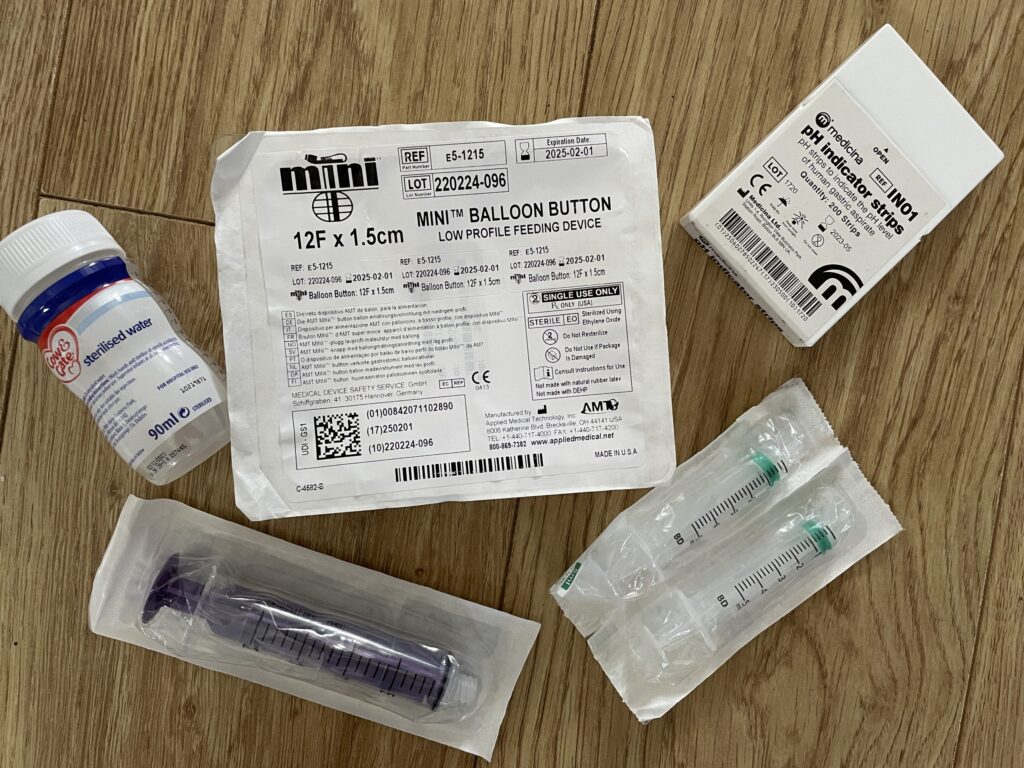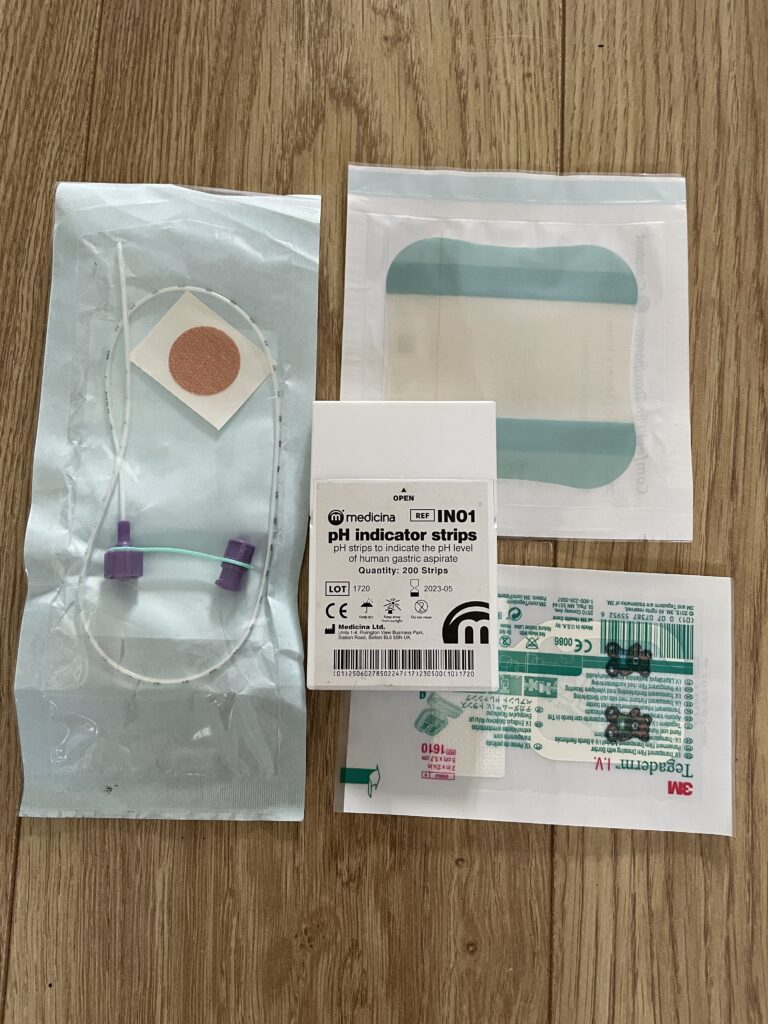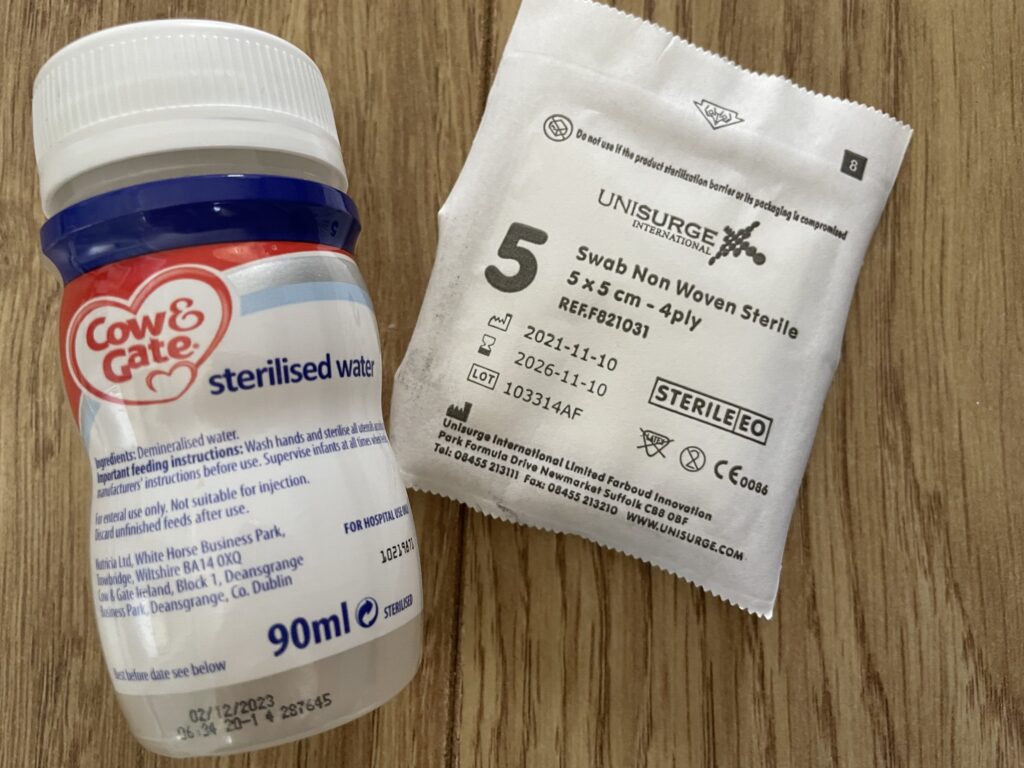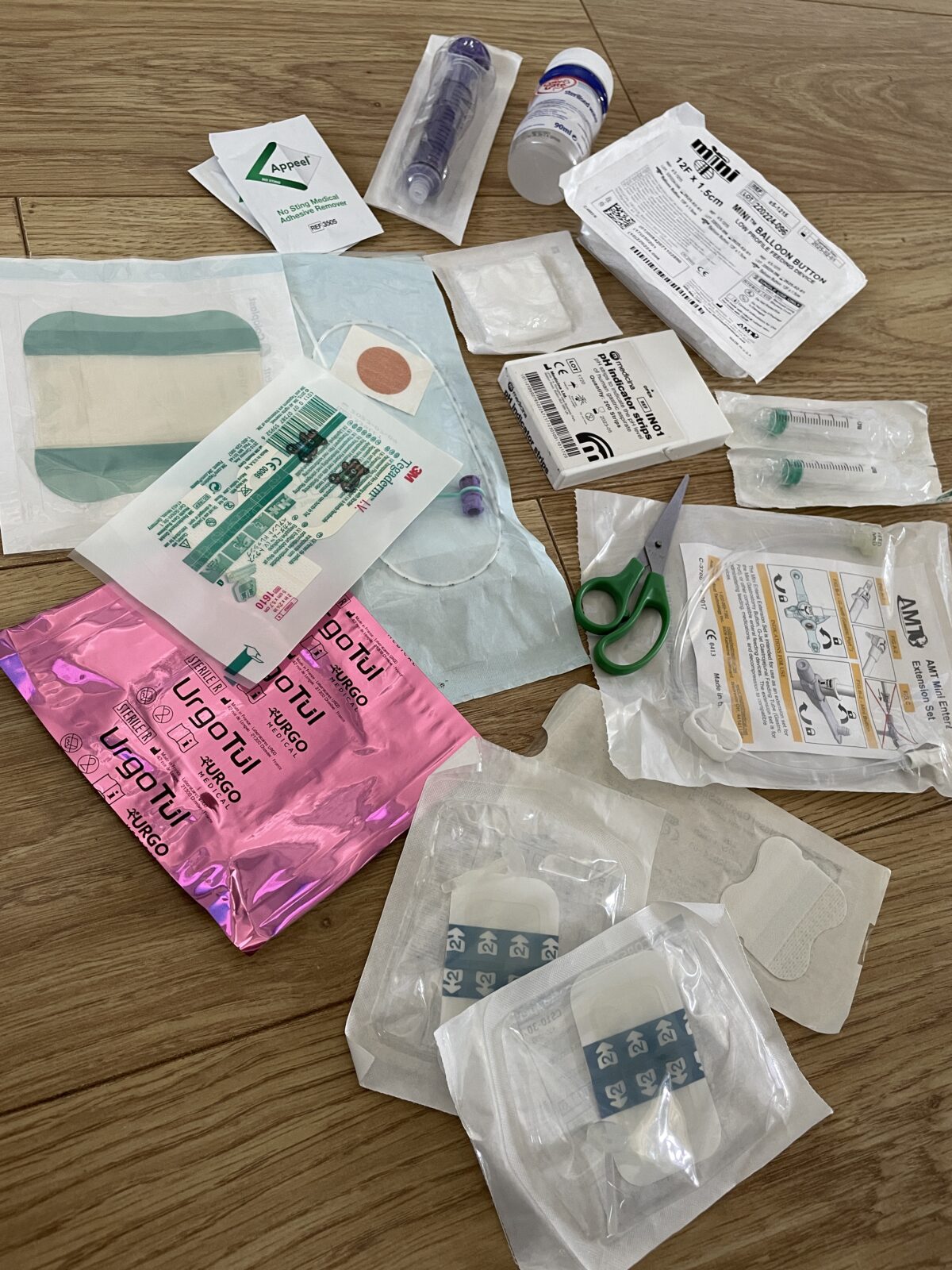Disclaimer: The post is based purely off of experience, please see my Disclaimer page to read more.
If you or your child has a G tube, then you probably have an emergency G tube kit, and if you don’t – then you should!
Why?
G tubes are life savers, and I don’t just speak metaphorically, for some people, they are the only way to get nutrition and hydration into the body. I speak more about this in my blog post comparing the NG tube with the G Tube.
But of course, the G tube doesn’t come without it’s potential complications, and when said complications arise, you’re not always going to be in the comfort of your well stocked home.
That’s where an emergency G tube kit comes in.
In this post I’m more specifically referring to the button g tube, as this is what I have experience with – some of these comments may not apply to other types, but I am not an expert so I can only speak from experience.
Lets talk about these potential complications.
I’m not going to go too much into detail about all of the risks that come with the g tube because 1. I’m not a medical professional and 2. I only really want to focus on the ‘more likely’ things that may happen.
So what could happen?
The G tube could fall out – and by fall out I’m also referring to being pulled out or the balloon could burst, thus leading to the tube falling out. The stoma has a very fast healing time, so sometimes waiting until you get home just isn’t an option unless you’re willing to go through another gastrostomy surgery.
Blockages – Especially if your tubie is on a thicker feed, powder mix feed or a blended diet. Sometimes those blockages can’t be solved with warm water or syringe tricks.
It’s not safe to use – There could be a reason why you feel the g tube just may not be safe to use, maybe its leaking, it looks strange or there’s just something else going on that leads you to be uncomfortable using it. Especially if the gastrostomy is new and still healing.
You’ve forgotten the extension – If you have, have had or have experience with a button g tube, you will know you need to attach an extension set to it for feeds. It’s very easy to forget a small plastic tube among your feeding supplies – believe me I know! The extension could also be damaged in some way and therefore not usable.
There could be other reasons that I’ve missed on this list, but this is all I can think of!
How To Make An Emergency G Tube Kit

Start with a bag or pouch of some sort, to keep all of your supplies together – I like to use a clear pouch so I can see everything that’s in it.
This pouch should go wherever you or your tubie go. I keep my daughter’s in her baby changing bag, as a general rule of thumb, the changing bag goes wherever we go, so does the kit!
What I Keep In My Daughter’s Emergency G Tube Kit
When thinking about what to put in my daughter’s emergency g tube kit, I found it easier breaking things down into sub-categories. That way I wouldn’t forget anything.
Button Change Supplies

A spare button – this is self-explanatory
Sterile water – This is vital for balloon button g tubes, but it also comes in handy for other things which I will get to. You can purchase small sealed bottles of sterile water that last a while, Cow & Gate is the brand we and our hospital use. You could also make your own with boiled, cooled water, but this is only good for 24 hours, so you would need to keep replacing it.
Luer tip syringes – or whatever type of syringe your button uses to deflate and inflate the balloon.
pH strips – you need these to confirm the placement of your g tube.
A spare syringe – just in case you didn’t plan on using your g tube on your outing, you may not have a syringe on hand, but again, you will need this to confirm the placement of your g tube. I recommend keeping a 20ml or 60ml syringe in your emergency g tube kit. I have been told by medical professionals that any smaller can put pressure on the balloon if you aspirate with them.
A spare extension set – just incase!
NG Tube Supplies

This for me is a last resort option, but I’d rather be prepared for all eventualities than caught off guard.
Imagine a situation where the g tube comes out without being noticed, like I said, the stoma has a fast healing time. There could be a scenario where stoma stoppers and spare g tubes are no use. In which case you need another method to feed or hydrate your tubie.
So I like to keep a back up of NG supplies just in case. Call it a plan B. Fortunately I am trained to pass my daughter’s NG tube, so this isn’t an issue for me. But even if you’re not, it’s still handy to keep NG tube supplies in your emergency g tube kit.
NG Tube – whatever length and French size is suitable.
Comfeel and Tegaderm – To secure the tube to the skin. Comfeel or another barrier isn’t 100% necessary in an emergency, but it doesn’t take up much space.
You would also need pH strips and a syringe – but I already covered these items.
Cleaning supplies

I think its handy to keep something in your kit to clean the stoma if necessary, you already have sterile water, so all you really need is some gauze – again, it doesn’t take up much space, and you never know when you might need to clean the stoma site.
Miscellaneous
Just a few extra bits – again I like to be prepared for all eventualities.
Tape to secure the g tube – If you’re in a scenario where you cant wash your extension set between uses, it may be easier to leave it attached to the button. This can be uncomfortable if it pulls, so I like to tape my daughter’s extension down if I’m leaving it attached.
Absorbent pads – this one wont be necessary for all – my daughter suffers from persistent granulation tissue and our community nurse advised us to us it. So of course, we keep a fresh one in our emergency g tube kit.
Medical scissors – generally a handy tool to keep in your kit. Especially if you need to cut tapes.
Stoma Stoppers

These are what they say on the tin – they stop the stoma from healing when it’s not being occupied in an emergency. I’ve not had to use one in action yet, but it’s a very good thing to keep on hand. I recommend keeping two sizes, one the size of the g tube, and one size smaller (just in case the stoma has managed to shrink, and you can’t fit your usual size). In my daughter’s kit, I keep a 12 fr and a 10 fr. Stoma stoppers are handy if the g tube has made it’s way out of the stoma, but you are not in the predicament to change it straight away – the point is to keep the stoma open.
That’s everything we keep in our emergency g tube kit. It has already come in handy a couple of times, usually just because we’ve forgotten an extension set.
But I can feel confident knowing when I’m out and about with my daughter that I don’t need to worry about a tube miss hap, the emergency kit will cover me for a lot of bases.
Just don’t forget to replace the items that you use.
I hope you found this blog post helpful, don’t forget to follow along on our journey making memories and creating an amazing life, while adapting to additional and complex medical needs.

